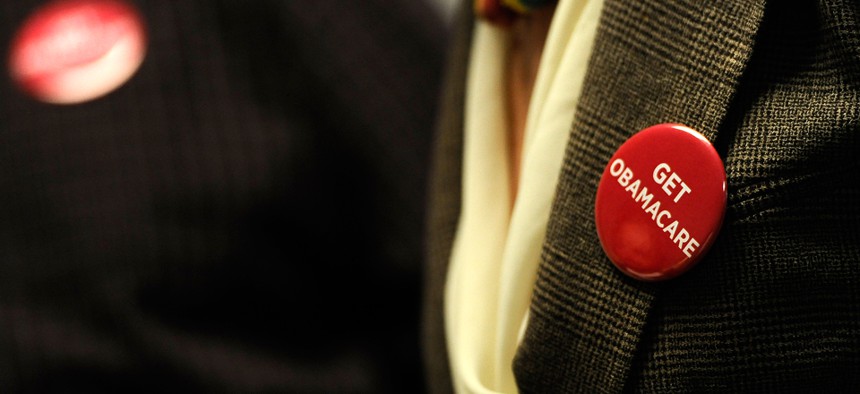Where The Affordable Care Act Is Still Struggling
Some states haven’t recovered from low enrollment in the law’s first year.
Obamacare enrollment is doing fine nationally, but it's still lagging in a handful of key 2016 battlegrounds.
Nevada is having an especially rough time. Iowa is making slow progress. And Ohio still has some work to do as well. They're among the handful of states that got off to especially rocky starts when Obamacare enrollment began, and—at least for now—haven't been able to fully turn things around in the law's second year, according to new figures from the Obama administration.
There's still time: Open enrollment doesn't end for another month, and most experts are expecting a surge in sign-ups ahead of the Feb. 15 deadline to buy coverage. And no state is doing as poorly as the law's critics have predicted: No one's insurance market is in danger of collapsing.
But the first state-by-state breakdown of 2015 enrollment—which the Health and Human Services Department released Wednesday—shows big variations in enrollment growth, particularly among states that didn't do well during the first open-enrollment period.
States like Texas and Florida, which enrolled especially large portions of their uninsured populations last year, don't need to see a big spike in the number of people signing up for coverage this year—they're already on the right track.
But other states fell far short of their enrollment goals last year, signing up only a fraction of their uninsured residents. Those states need to see significant growth this time around. Each state is its own insurance market; premium increases vary from state to state, as will Obamacare's success or failure.
Wyoming, for example, is making up for lost time. It ranked near the bottom last year in terms of signing up eligible residents. But sign-ups in the state have already increased by 42 percent since then—the biggest growth rate in the country.
North Dakota, Oklahoma, and Nebraska are also seeing at least a 30 percent increase in sign-ups after poor showings in 2014.
"Some of the highest growth is in markets that did less well last year," said Larry Levitt, senior adviser for special initiatives at the Kaiser Family Foundation.
But some of the lowest growth is also coming from states that did poorly last year:
Nevada ranked 43rd last year in the number of eligible residents who actually signed up for coverage. Since then, sign-ups have grown at an anemic 5.3 percent—the lowest rate of growth in any state.
Nevada's exchange has been beset by technical problems, and its total number of sign-ups as of last week was only about 2,000 higher than its totals in April. That growth rate is so small, it might not even make up for the people who signed up but never paid their premiums, Levitt said.
Similarly, Iowa was second-to-last in 2014, signing up only about 13 percent of eligible residents. Sign-ups are 18 percent higher this year, compared with 24 percent nationally.
The latest data cover only the 37 states that are relying on HealthCare.gov to operate their exchanges. Four of those states were in the bottom 10 performers last year and are also in the bottom 10 states for growth this year.
It's not entirely clear why enrollment is growing faster in certain states, Levitt said. But he said the discrepancies raise an important point about Obamacare's future: While big, populous states like California and Florida propelled the law to an enrollment success in its first year, and will add millions more people to the rolls in 2015, the law will need higher enrollment from "unlikelier places" to truly keep growing in the long term.
NEXT STORY: Obama's Two Minds on Natural Gas



